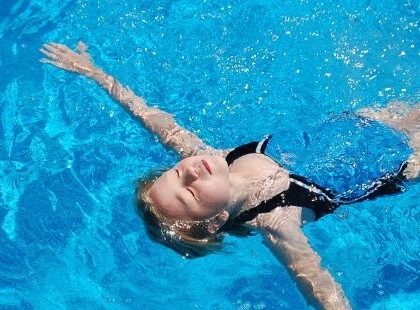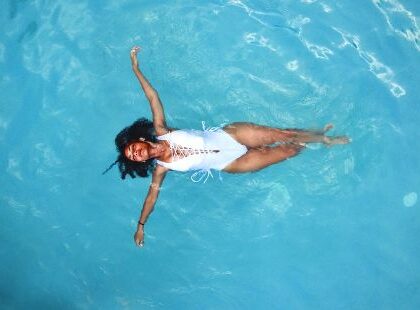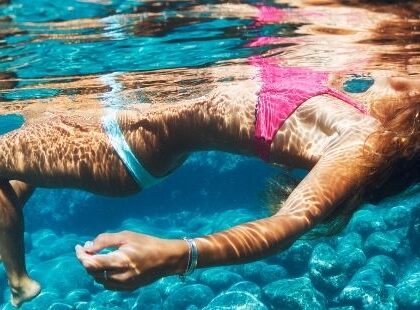
Have you ever had this experience? You train hard every day. You focus on your nutrition. You even take the right supplements every day. But somehow you never seem to get the results you are expecting. So, what were you doing wrong?
The answer probably has to do with recovery. Most people don’t realise the important role that recovery plays in getting optimal results in sports. Today, we will look at how utilising floatation and massage therapy within sports for optimal results in your sports training.
Why is Recovery So Important?
If you are a sportsperson or a fitness enthusiast, you probably train extremely hard to get to your goals. Training is very important. But, if you are not looking after yourself (read inadequate recovery), you are asking for trouble!
Think of a high-performance car – maybe a Ferrari. When you push the machine to its limits, every component is stretched to its limits as well.
To keep running at its peak, a Ferrari needs a few things - premium fuel (E10 unleaded just won’t do), and regular maintenance.
Now, take the same metaphor and apply it to your body. To perform at your best, you not only need nutritious food, but also maintenance in the form of a proper recovery strategy.
Sports Recovery Techniques for Optimal Results
Massage Therapy

Firstly, if you train regularly, you must get massaged! This is key to your recovery and must never be overlooked. Some people seem to think foam rolling is enough. It isn’t! Remember, there is only so much foam rolling one can do.
Massage is a great way to speed up recovery and avoid future injuries. Pick a frequency that works for you - everyone’s needs are different. Your frequency will depend on how much training you are doing at present.
As a rule of thumb, do it at least once a month. However, if you are training harder - for something like an Iron Man competition, you need to get massaged more often. For best results get massaged during taper periods.
Static Stretching

Do static stretching after any exercise. This can be done immediately after or later in the evening before bedtime. You can use a foam roller.
Whilst foam rolling cannot give you all the benefits of a massage, it does help break down tension and trigger points. An additional benefit of using the foam roller is, when you do have a massage, your therapist can get much more out of you!
If you are unsure of which stretches are good for you and can give you the best benefits, get in touch with the sports chiropractors at Paramount Health and we will be happy to guide you.
Floatation Therapy

Next, we will look at floatation. If you don’t already know about it, floatation may sound like a strange option for recovery. But believe me, it is amazingly effective as a recovery technique.
Floating creates an anti-gravity effect on your body, which means it decompresses your joints and your body. On top of that, the Epsom salts you are soaking in will help you absorb quite a bit of magnesium whilst you are floating, this will noticeably reduce any muscular tension you are feeling.
Those two elements combined, along with the sensory isolation the tank has to offer, give your body incredible relaxation - the kind you honestly cannot get anywhere else.
Don’t underestimate the benefits of relaxation in your training. When your body is in a naturally relaxed state everything works as it should. This means you’re less likely to get injured and you are more likely to train and compete at your optimum.
Your energy levels will be high and stable, and you will develop acute body awareness (additionally, massage can elevate this awareness). So, you have a better chance of mastering any sports moves without the risk of a serious injury.
When to use Floatation Therapy within Sports?

Well, you can use it anytime you want to relax. But I recommend using it as soon as you notice your energy levels dropping and when you need a boost. Or, alternately, you can use it when your muscular tension gets too high.
The benefit of floatation is that you can do it without any worry about any negative effect it can have on your training or an event. The more you float, the better you feel! Eventually, you will build up a good baseline.
Research on floatation therapy has shown that these results are long-lasting and do not diminish immediately after the session is over.
After a big event, we always recommend having a float – ideally between one to two days after the event and having a massage 3+ days after the event.
The reason for the delay in the massage is that you are naturally processing the effects of the big burst of exercise. Massage, when done too soon, can leave you a little bruised and a bit tender. It’s our experience that the 3+ day rule works best after heavy physical activity.
Keep in mind that when it comes to floatation, a one-off session will give you limited results. More sessions can give you better and long-lasting results.
Sports Recovery: The Next Step

You can read more about the benefits of floatation here.
When to use the float tank and how regularly, just like the massage depends on your physical condition and your training frequency and intensity. It is important that you find a good routine that suits you. It’s also important that you do not stop, just because the season is over.
Your best results and change will come into play during your off-season when you can work towards building your baseline for an even better next season!
Now that you understand the importance of recovery and how you can utilise floatation and massage therapy within sports for optimum recovery, I suggest you talk to one of our experts and then book the session that suits your specific recovery need.









